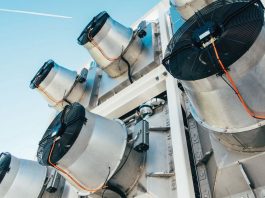Researchers have compiled the first comprehensive global database for water-use efficiency by assessing the carbon isotope composition of tree rings.
Water-use efficiency is essential to measuring how much water trees are returning to the atmosphere. This water return rises along with the atmospheric concentration of carbon dioxide via tree responses.
Understanding water-use efficiency
According to Professor Mark Adams, lead researcher and Swinburne University professor, tree-ring data is vital to understanding past climates and predicting further changes to the environment.
Adams commented: “Over the past 100 years, the data shows that the rate at which water-use efficiency increased was greatest during the Great Depression and in the aftermath of World War II – periods of much slower increases in the concentrations of carbon dioxide in the atmosphere.
“In the last ten years, however, the rate of increase in water-use efficiency has shrunk to close to zero – the mature trees are no longer acclimating to atmospheric carbon dioxide the way they were 60+ years ago.
“This has important implications for global hydrological models that help us understand, predict and manage water resources.”
Predicting future tree ring data
The continued increases in atmospheric carbon dioxide is unlikely to elicit the same response from trees they did 50 years ago. Reductions in humidity and increases in run-off are now less likely than they once were.
Adams believes the data may also be influenced by the current COVID-19 pandemic. If there is a pause in carbon dioxide emissions as a result of reduced economic activity, Adams says “we may see a rebound in the rate of change in water-use efficiency.”
The research paper ‘Diminishing Co-2-driven gains in water-use efficiency of global forests’ has been published in Nature Climate Change.
The research was funded by the United States Department of Agriculture Agricultural Research Service and the Australian Research Council.





